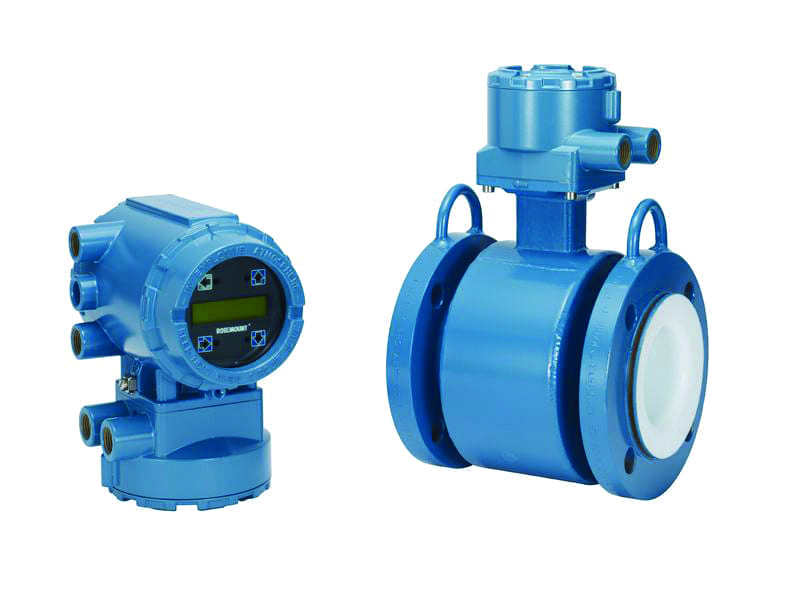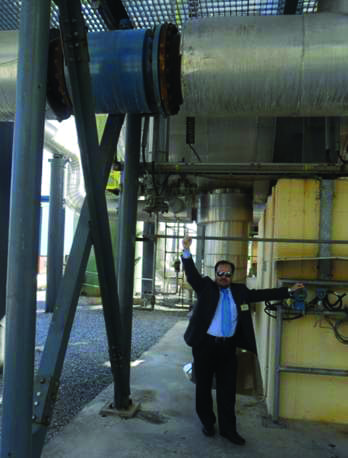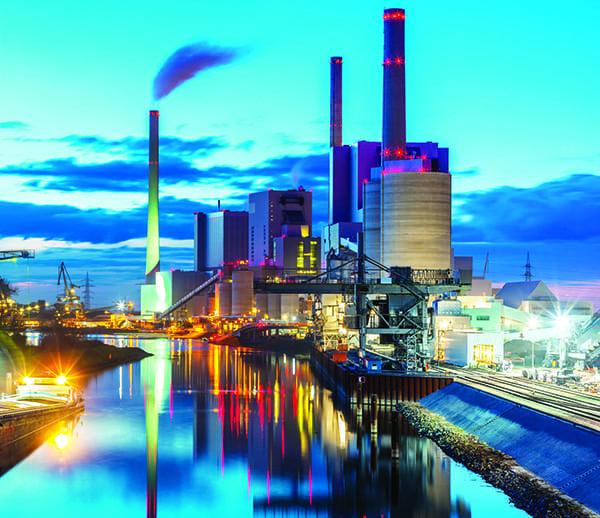What You Need to Know About Magnetic Flow Meters
The post What You Need to Know About Magnetic Flow Meters appeared first on POWER Magazine.

Magnetic flow meter technology is an optimal tool for wastewater processing, which can apply across power generating facilities that require water for cooling, steam, or other applications.
In recent years the magnetic flow meter has proven a reliable and steady flow meter at water and wastewater facilities, effectively dealing with a variety of challenges posed by pollution or waste in water. The same holds for power plants that use geothermal water, where the main challenge is dealing with the hot brine that gets pumped up, generating the heat for the plant. In that case too, a magnetic flow meter meets the challenge as we'll illustrate below, though it should be noted that the temperature of the hot brine can add an additional challenge in that type of facility.
Coal-fired plants generate wastewater, which can contain high levels of heavy metals due to flue gas desulfurization (FGD). The wastewater can contain arsenic, mercury, selenium, chloride, and more. Each of these elements is harmful to the environment and is tightly regulated by environmental agencies. This means a facility needs to have the means to properly filter them out and dispose of the wastewater in a way that doesn't cause harm to humans or the environment.
Before we look at real-world examples of magnetic flow meters (Figure 1) in power generation wastewater, let's first look at what makes a magnetic flow meter the right tool for the job.
 |
1. Magnetic flow meters offer a reliable option for measuring flow in several power plant applications. Emerson's Rosemount 8705 Flanged Magnetic Flow Meter Sensor and 8732EM Field Mount Magnetic Flow Meter Transmitter are shown here. Courtesy: Emerson |
The flow principle behind magnetic flow meters is known as Faraday's Law. In practice, voltage directly proportional to a fluid's velocity is induced when the fluid passes through a magnetic field. The induced voltage is carried to a transmitter through an electrode circuit. The transmitter then converts this voltage into a quantifiable flow velocity. The volumetric flow rate of the fluid is calculated using this known velocity along with the area of the pipe. Although pure water is not conductive, a magnetic flow meter is very useful in applications where water is not perfectly clean, such as wastewater applications at power stations, water and wastewater treatment facilities, and even in hydraulic fracturing applications.
Geothermal Hot Brine Measurement. At a large geothermal power plant in Turkey, technicians were struggling to get accurate measurements of the hot brine they pumped up from the wells that then flowed to the power generators. Water coming from those wellheads is usually at a temperature of 320F (160C), but it can go as high as 347F (175C).
To solve this particular issue, the technicians and engineers tried a number of different technologies, including vortex meters and in-line ultrasonic meters. In all instances, the meters stopped working or developed problems due to the heat of the brine flowing through them, as well as the composition of the brine, which was causing problems with corrosion and scale deposits on sensors.
Those same levels of scale also made it harder to reuse the water after it had cycled through power generators. In many ways, the same issues listed above apply to the wastewater a geothermal power plant produces. The water must be measured accurately in order to be correctly disposed of, whether recycled, cleaned, stored, or pumped back into the ground.
In some instances, the minerals in the brine can be extracted from the water for other industrial uses. But in terms of flow measurement, accuracy in all things is essential. A magnetic flow meter can provide that accuracy while also being reliable in the long term. On the side where hot brine is pumped out of the ground, a magnetic flow meter (Figure 2) with a suitable liner to withstand the corrosive nature of the brine will provide a highly accurate measurement of materials pumped up.
 |
2. A Rosemount 8705 Magnetic Flow Meter Sensor is shown here installed in the hot brine pipe at a geothermal power plant in Turkey. Courtesy: Emerson |
Coal-Fired Power Plants. Coal-fired plants have seen growing environmental regulation of their emissions. The Coal Combustion Residuals (CCR) rule and Effluent Limitations Guidelines (ELGs) from 2015 have been particularly challenging for coal units.
The ELGs specifically target the discharge ash transport waters, flue gas mercury control system waters, wet flue gas desulfurization scrubber purge, and CCR leachate. These new regulations meant coal plants needed to close their ash ponds and find ways to measure, clean, and dispose of their wastewater accurately.
At the time the new regulations were approved, many coal plants had very little in place to effectively deal with wastewater. Until recently, the majority of coal plants had ash ponds where the wastewater was stored, but the new regulations have seen significant improvements, with plants setting up and completing fly ash conversions, and creating compliant bottom ash handling systems.
None of these changes came about quickly or easily. Facilities had to consider the cost of new equipment to handle these new regulations, as well as determine which equipment would be best-suited to the challenge. In talking with several coal-fired utilities in the southeastern U.S., Emerson learned that most opted for magnetic flow meters, as research showed these to be the most reliable and accurate in their measurements of water with dissolved or even solid material in the liquid mixture.
A magnetic flow meter can register relatively small levels of impurity in water. The higher the level of pollution in the water, the stronger the meter registers the flow. With a magnetic flow meter, it becomes possible to define water balances accurately, and to test and confirm the quality and quantity of both influent and effluent streams at a coal-fired power facility (Figure 3).
 |
3.Many coal power plant systems require accurate flow measurements. Although streams with ultrapure water are not suitable for magnetic flow meter technology, the design can register accurately in applications with relatively small levels of impurities in the water. Courtesy: Emerson |
Another factor involved in meeting the regulations is groundwater remediation. Being able to effectively evaluate the amount and the cleanliness of plant water that is to be pumped back into the ground is necessary for reporting purposes. If the water is found to be too contaminated with particles, metals, or toxic chemicals, the plant will be required to institute remediation practices to clean up the discharged water and improve their process to address contamination from recurring. Creating more efficient and optimized systems by installing the most effective technologies reduces waste, which benefits not only the facility, but also the environment, and ensures fewer hazards to plant personnel.
Cogeneration Power Stations. A relatively new development is cogeneration facilities that combine heat and power generation at wastewater facilities. In most simple terms, cogeneration, also known as cogen, is a thermodynamically efficient use of fuel. This type of facility is often found at wastewater sites in colder climates, where the digester gas or biogas produced by wastewater treatment is captured and used in power generation.
Depending on volumes, the energy generated is used only to power the wastewater facility or can be used to power additional industrial facilities nearby. Magnetic flow meters are used extensively at wastewater plants, and in cogeneration types of facilities they are proving their worth in influent and effluent water measurement too.
Magnetic Flow Meters for WaterLooking at the different types of power generation facilities, it becomes clear that water features heavily in several areas of the process, and the accurate measurement of that water is essential to meeting not only process requirements but also environmental regulations. Poor measurement data can lead to overflows, spills of contaminated water, or wastewater being improperly disposed of. There are also potential hazards to personnel and the environment, which can lead to fines.
Optimizing a process, in all instances, relies on investing in quality equipment that can meet the challenge long term. Magnetic flow meters have proven to be cost-effective and reliable in many applications.
-Trever Ballis director of product marketing for Emerson's Rosemount Magnetic Flow Meter products. He has 20 years of experience with process instrumentation, specializing in magnetic flow meters.
The post What You Need to Know About Magnetic Flow Meters appeared first on POWER Magazine.